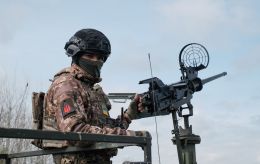Breakthrough in the south and 'hot' Kupiansk: How the Ukrainian counteroffensive unfolding after two months
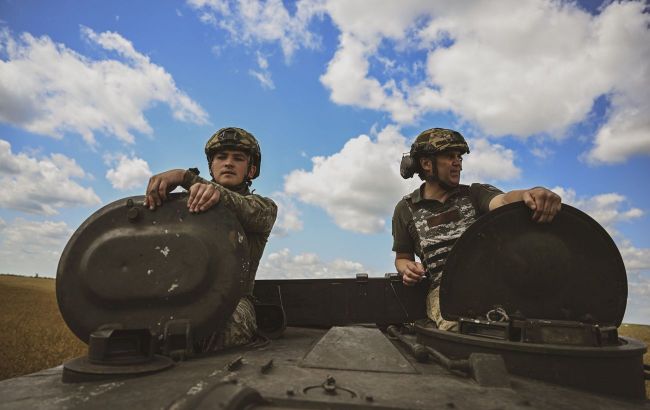 Ukrainian roops have successfully breached the Russian defensive line in the south after two months of intense combat (photo: Getty Images)
Ukrainian roops have successfully breached the Russian defensive line in the south after two months of intense combat (photo: Getty Images)
During a counteroffensive in the south, Ukrainian forces managed to breach the first line of Russian defense in certain locations. Simultaneously, the enemy has intensified pressure in the northeastern sector. More on the frontline situation read in the RBC-Ukraine overview.
Hottest area
The Kupiansk sector (Kharkiv region) is currently the hottest zone. As stated by Deputy Minister of Defense Hanna Maliar, Russian forces are attempting to regain control over positions lost in the fall.
"The enemy tried to break through our defense, but they failed. However, the confrontation was extremely intense," she noted.
According to her, the Russians are trying to identify weak points in Ukraine's defense and launch assaults on positions east of Petropavlivka.
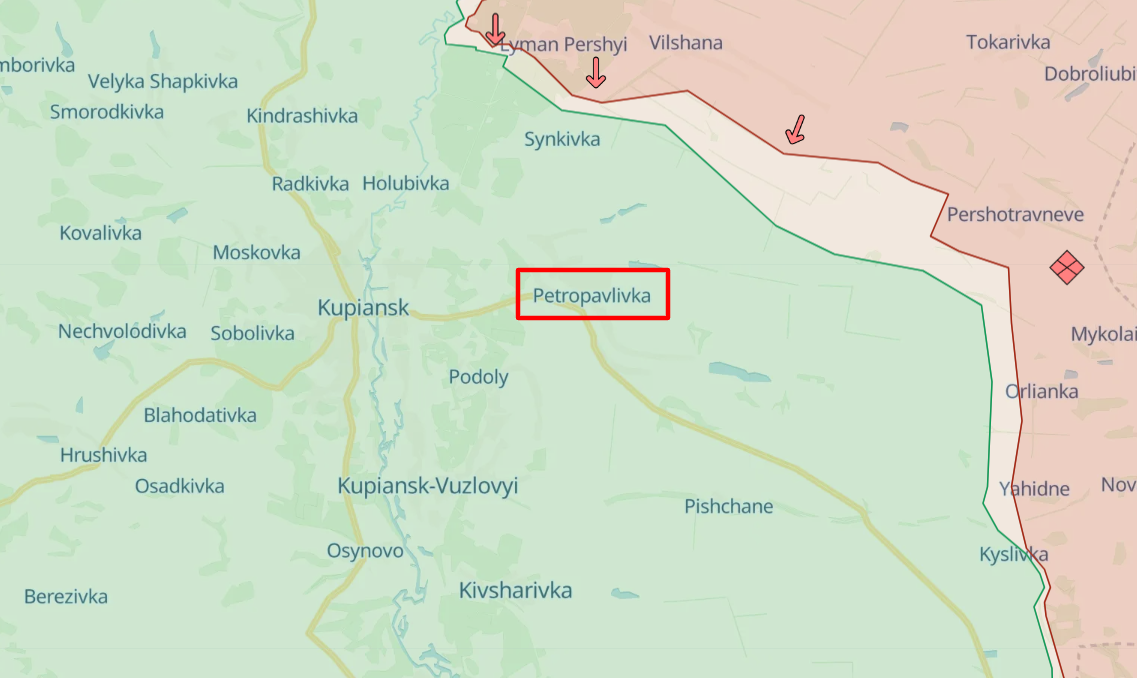 Russians assaulting positions east of Petropavlivka in the Kharkiv region (deepstatemap.live)
Russians assaulting positions east of Petropavlivka in the Kharkiv region (deepstatemap.live)
Serhii Cherevatyi, the Spokesperson of the Operational Command East of the Armed Forces of Ukraine, emphasizes that the Russians are seeking revenge and dream of recapturing Kharkiv. However, Ukrainian defense forces are aware of the enemy's plans and consistently thwart them.
Military expert Oleksii Hetman believes that the occupiers have shifted to a tactic of tank attacks to reach the Oskil River and squeeze Ukrainian forces onto the other bank. However, our forces managed to halt the advance by deploying small reserves.
"Most likely, these actions were taken to force us to shift our forces from the southern direction. Or to disperse our forces, weakening our capabilities in other areas," he commented to RBC-Ukraine.
Amidst battlefield failures, the enemy has intensified shelling of civilians. In the past few days alone, due to strikes on Petropavlivka, an elderly man was injured and houses were damaged. Russian aviation dropped four bombs on private homes in the village of Kruhliakivka south of the district center, resulting in two deaths and seven injuries. The day before, during the shelling of Kharkiv, a 14-year-old boy was wounded.
As Hetman underscores, the escalation of shelling aligns with the Russian tendency to transform everything into scorched earth, hoping to weaken the defensive capabilities of Ukrainian forces.
Svatove-Kreminna line stabilized
Further south, intense battles continue in the area of Kremeinna and Svatove in the Luhansk region. According to National Guard representative Mykola Urshalovych, defense forces are managing to hold the line and inflict heavy losses on the enemy in Serebrianske Forest.
It should be noted that the occupiers have been attempting to breach Ukrainian defense here for several months. After the liberation of Lyman (Donetsk region), Serebrianske Forest was considered by our troops as a foothold for movement toward Kreminna, but the enemy moved significant reserves there.
Nonetheless, Russian assaults are being contained. This is achieved, among other things, through the use of grenade launchers against enemy positions, as demonstrated by Commander of the Army of the Armed Forces of Ukraine Oleksandr Syrskii.
Several weeks ago, occupants launched an attack toward Borova (Kharkiv region) and likely temporarily seized control of several villages, but were driven back from some positions. According to DeepState service data, Russian forces captured the village of Novoselivske along the Svatove stretch, while our forces managed to push them south of Novoiehorivka.
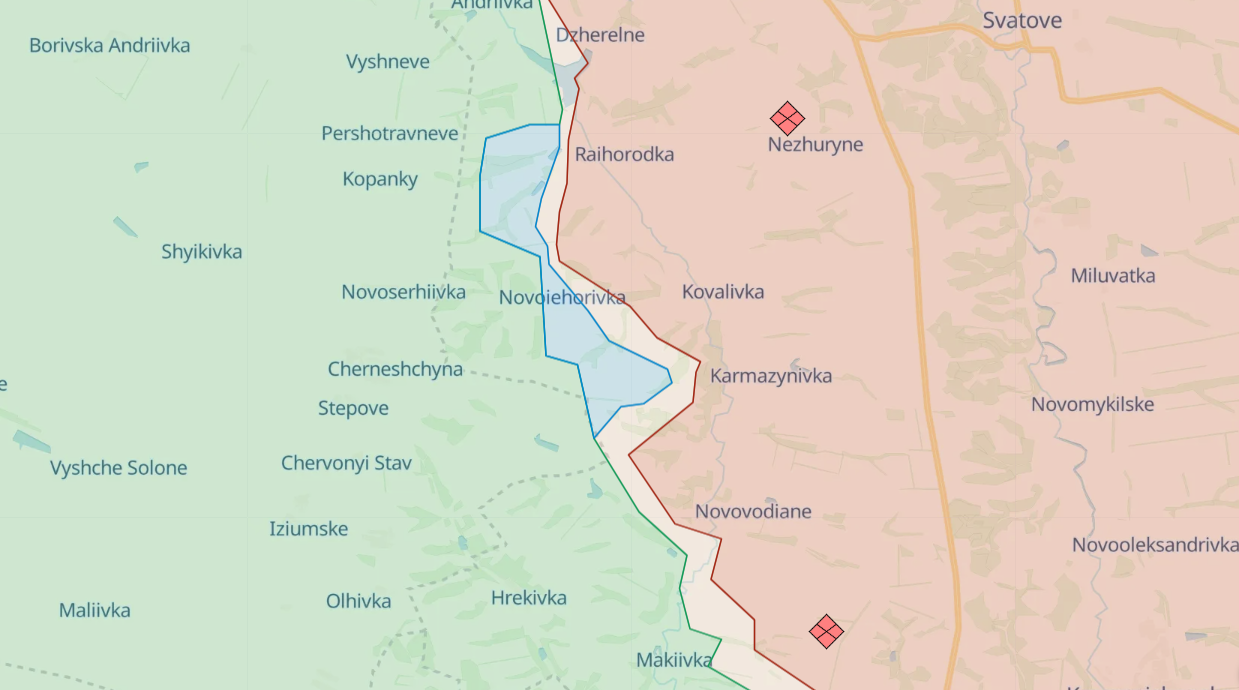 Ukrainian military halted Russians attempting to advance toward Borova (photo deepstatemap.live)
Ukrainian military halted Russians attempting to advance toward Borova (photo deepstatemap.live)
However, the situation here remains exceptionally difficult.
"They (Russians - Ed.) want to execute the so-called "great offensive plan" by General Gerasimov (commander of the occupation forces Valery Gerasimov – Ed.). They attacked our frontlines, faced resistance, suffered losses, and are currently repositioning. Meanwhile, they have initiated an advance toward Kupiansk, given their sizable force of 100,000 personnel there," said military expert Vladyslav Seleznov.
He added that even with a significant numerical advantage, the enemy cannot achieve substantial territorial gains. Progressing by a few hundred meters or 2-3 kilometers, considering the available resources, amounts to very little.
Oleksandr Musiienko, Head of the Сenter of Military Law Researches, stated that the occupiers had two goals here, both of which remain unachieved. Firstly, they failed to breach the defense, reach the Oskil River, and continue toward Lyman and Bilohorivka to threaten Ukrainian forces near Bakhmut. Secondly, they couldn't divert forces from the southern directions.
"But it's worth noting that the attacks haven't ceased. They simply haven't achieved any success yet, and I hope it remains so in the future," he added.
Advance from the south toward Bakhmut
Efforts on the approaches to Bakhmut are concentrated to the south of the city. Fierce battles are ongoing for the settlements of Klishchiivka, Andriivka, and Kurdiumivka. Information emerged in Telegram channels indicating that half of Klishchiivka is under the control of Ukrainian forces, while the other half is under fire control from dominant heights. These details haven't been officially confirmed.
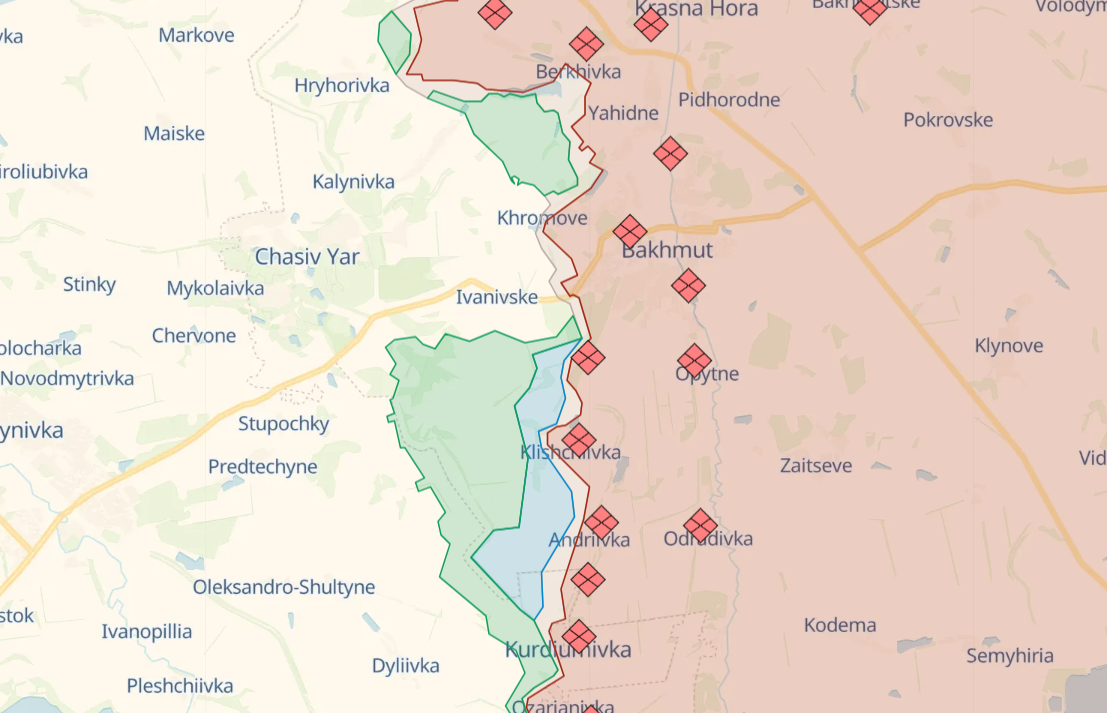 The main battles for Bakhmut are happening to the south of the city (photo deepstatemap.live)
The main battles for Bakhmut are happening to the south of the city (photo deepstatemap.live)
Deputy Minister of Defense Hanna Maliar stated that the advance continues on the southern flank, while fierce battles persist on the northern flank, where Russians are attempting an assault to regain lost positions. However, despite the complexity of the situation, it remains under control.
Serhii Cherevatyi noted that despite intensified artillery shelling and Russian counterattacks, the initiative remains with the Ukrainian side.
Analysts from the American Institute for the Study of War (ISW) emphasize that the Bakhmut operation has forced Russia to deploy additional units here. Currently, elite Airborne Troops and special forces are deployed. They also do not rule out that this could be part of a Ukrainian strategy to weaken the occupation forces in the south.
Simultaneously, Defense Forces are conducting operations not only on approaches but also in Bakhmut. Recently, General Syrskii demonstrated how drones are targeting reconnaissance stations within the urban area.
The pause between positive news has dragged on, creating an impression that the advance on Bakhmut has slowed down. As Vladyslav Seleznov explains, the enemy redirected additional resources to the southern and northern flanks. Leading an offensive becomes notably challenging when lacking advantages in the aviation and artillery components.
"Undoubtedly, under such conditions, the offensive has decelerated, transitioning to positional warfare in certain sectors. However, they (the Russians - Ed.) are managing to restrain us primarily through an incredible concentration of forces. It's important to remember that currently, up to 80% of Russia's operational reserves are deployed to counter our advance," he revealed to RBC-Ukraine.
Oleksandr Musiienko emphasizes that Ukrainian forces are advancing on Bakhmut with limited striking means, artillery, and ammunition. According to him, the priority direction has become the south, and even then, our troops are making progress and achieving tactical successes.
It's worth noting that last week marked a year since the start of the battle for Bakhmut. The capture of the district center involved tens of thousands of lives on the Russian side, making it the bloodiest and longest-lasting conflict in the Russian-Ukrainian war.
Breaking through the first line of Russian defense
In July, the Ukrainian Armed Forces first breached the so-called Surovikin Line, fortified with anti-tank obstacles known as "dragon's teeth." A video emerged online depicting an armored vehicle, apparently affiliated with Ukrainian units, attempting to overcome a ten-kilometer-wide trench to the south of confirmed positions in the Zaporizhzhia region, effectively behind Russian forces.
Last week, Deputy Defense Minister Hanna Maliar stated that on some sectors of the southern front, our troops did indeed breach the first line of defense and advanced to the intermediate line. This intermediate line is fortified with substantial defensive structures and ample reserves, making progress challenging.
Yet, the specific location of breaching the first line is undisclosed. The day before, Natalia Humeniuk, Head of the United Coordinating Press Center of Security and Defense Forces of the South of Ukraine, confirmed that after the breaching, successes are being developed, but updates are being provided gradually.
"This is only the first stage when the defense line is breached. After that, it is necessary to consolidate those sections and ensure the safety of the units that made the breakthrough. Therefore, news here may be somewhat delayed," she emphasized.
One might presume that one of the areas where our troops managed to breach the first line of defense is the Melitopol direction. Serhiy Kuzmin, Deputy Commander of the Tavria Operational and Strategic Grouping for Strategic Communications, says that in the vicinity of Robotyne village, Ukrainian units have progressed by hundreds of meters. He also added that advances by the Defense Forces are ongoing in the Berdyansk direction. However, according to Kuzmin, minefields and the lack of aviation are impeding further movement.
Robotyne village to the south of Orikhiv city remains the hottest spot in the Zaporizhzhia region, as before. Currently, Ukrainian forces are attempting to bypass it from the flanks.
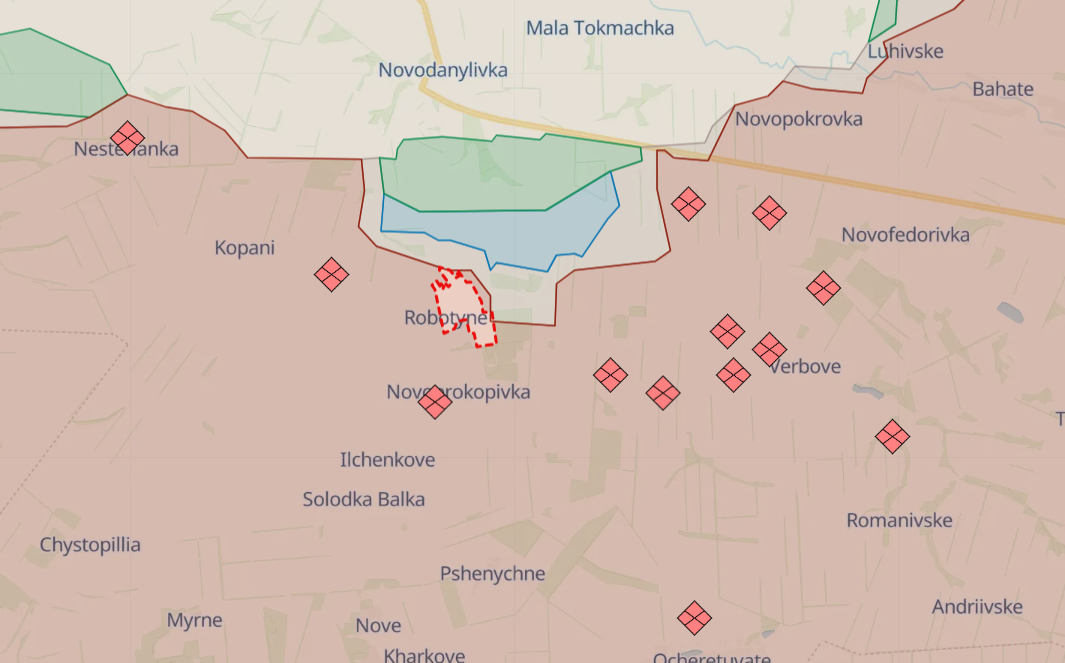
Ukrainian forces attempt to bypass the Russian stronghold in Robotyne from the flanks (photo deepstatemap.live)
Vladyslav Seleznov notes that most likely, the first line of Russian defense has been breached on at least three sectors of the southern front, not just near Robotyne, but also on the outskirts of Staromaiorske (Berdyansk direction) and toward the occupied Vasylivka (Zaporizhzhia region).
"It's important to keep in mind the importance of information hygiene; only official spokespersons can talk about this after we consolidate new positions. Moreover, I would add the Shakhtarske direction to this, as battles have intensified recently around Vuhledar. The initiative there is also with the Ukrainian army, forcing the Russians to deploy reserves. Considering that they aren't abundant in this area, things aren't looking good for the Russians," the expert states.
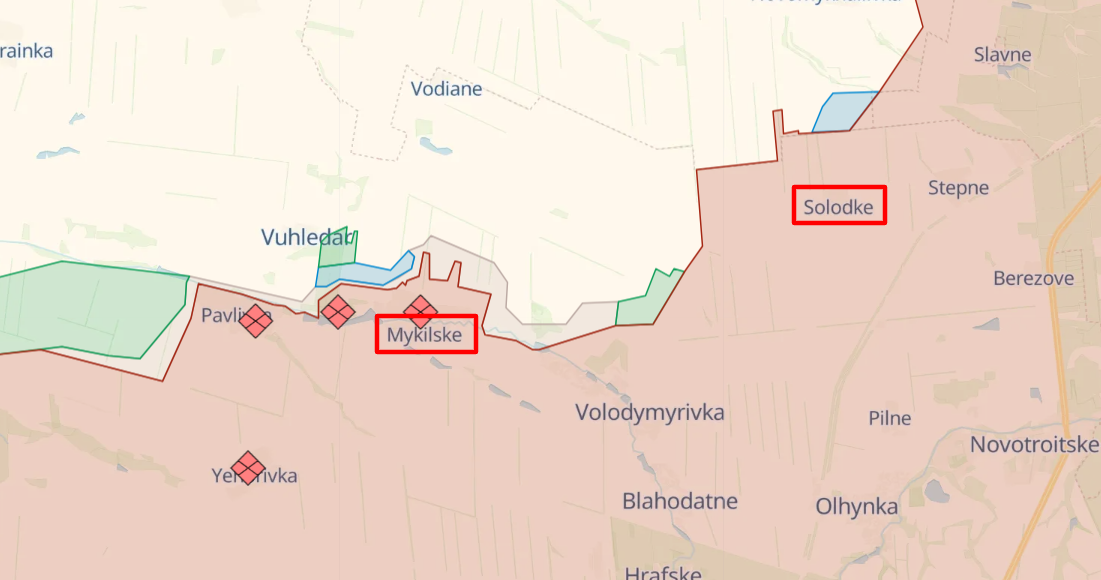 Advances are being made near Mykilske and Solodke villages in the Vuhledar area (photo deepstatemap.live)
Advances are being made near Mykilske and Solodke villages in the Vuhledar area (photo deepstatemap.live)
According to DeepState's data, last week, defenses were breached north of Mykilske village near Vuhledar, and Russian forces were pushed back into the area of cottages and dislodged from positions to the north of Solodke village.
UAF reached Dzharylhach Island
Last week, for the umpteenth time, the war theater extended to the military updates, with the island of Dzharylhach (Skadovsk district, Kherson region), located 70 kilometers from the front line. The Center for National Resistance showcased a video of HIMARS missiles accurately striking a congregation of Russian soldiers. A drone guided the fire, recording the hits and consequences.
Based on the video footage, it appears that five units were positioned in open terrain, upon which a rocket strike occurred within a short period of time. Preliminary reports suggest that around 200 individuals were present, most of whom are presumed to have been killed or injured.
"All of this is part of the offensive actions, targeting the enemy where their forces and assets are situated. The more they are neutralized there, the fewer they can divert to the front lines," stated Oleksandr Musiienko in a conversation with RBC-Ukraine.
It's worth noting that Dzharylhach is a national natural park, but the Russians have established a military training ground there and have connected the island to the mainland with a sandy spit. According to Musiienko, in the long run, the actions of the Ukrainian Armed Forces will create opportunities for the de-occupation of both the island itself, which was uninhabited before the occupiers' arrival and the broader southern region.
For more details on how the Ukrainian defense forces are approaching the liberation of occupied Crimea, refer to the report by RBC-Ukraine.
Despite two months of summer counteroffensive, only around 200 square kilometers of Ukrainian territory have been liberated. While these rates are hardly satisfying, it's crucial to understand the cost at which even minor territorial gains are achieved.
In the context of extensive minefields and Russia's numerical superiority, our troops are performing admirably within the best possible scenarios, methodically dismantling the opponent's defenses. This will be a challenging and exhausting battle, unlikely to resemble the operations in Kharkiv or even Kherson. In the meantime, Ukrainians must arm themselves with patience if they genuinely aspire to victory.
